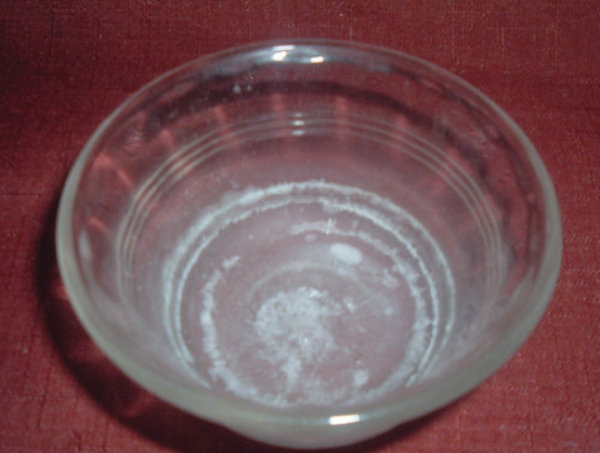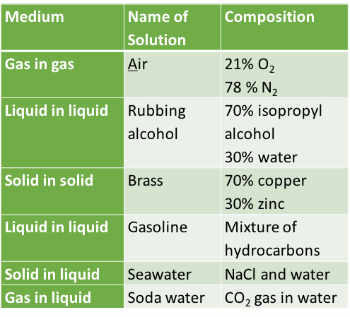Mixtures of Pure Substances
Having discussed the various aspects of both elements and compounds, we will now look at the properties of these same substances when mixed together. A mixture is a combination of two or more substances. Substances in a mixture do not chemically react, and each substance retains its own chemical identity. Suppose we mixed together the two pure substances, water (H2O) and salt (NaCl). The result, to no surprise, is a mixture we commonly refer to as saltwater. If you are told to make the mixture of salt and water, how much salt would you add to the water? Given these directions, you could make a saltwater mixture containing very little salt or a lot of salt. We need to be told how concentrated to make the mixture. In mixtures, the amount of any component may vary. That is, mixtures have variable composition.
Most people know what happens when a saucer of saltwater is left outside in the sun for an extended period of time. The water will evaporate away from the mixture, leaving behind a saucer full of salt. In other words, the salt that was added to water can be recovered. In fact, using the proper apparatus, a distillation apparatus, both the salt and the water can be recovered. Each component can be recovered from a mixture. This is a very important property of mixtures. The fact that the various components of a mixture can be recovered intact, tells us that while in the mixture, these same components maintain their chemical identities. In mixtures, the components do not chemically react with each other.

Many people are not aware that the pure substance water does not conduct electricity. It’s all the extra stuff, like metal ions, that give tap water its electrical conductivity. Salt is one such substance that produces electrical current in water. By increasing the concentration of salt in a given volume of water, the electrical conductivity of the mixture is also increased. Consider another physical property that is affected by changing the amount of salt in the water. When salt is added to a pot of boiling water on the stove the bubbling momentarily stops. This is because the addition of the salt raises the boiling point of the water. This is called boiling point elevation which will be discussed in detail in a later section.
Types of Mixtures
Returning to the saltwater mixture, let’s discuss how mixtures are described. Into 100 ml of water, mix 1 g of salt. The salt will completely dissolve, resulting in a clear, colorless mixture. In this mixture, the salt and the water are uniformly mixed. This is called a homogeneous mixture, which is also known as a solution. To say homogeneous solution is redundant and unnecessary. When considering solutions, most of us think in terms of liquids. In reality, homogeneous mixtures or solutions may consist of solids, liquids, or gases. Some examples are given in table below.

A solution can be composed of one or more solutes dissolved in a solvent. The solute is present in the lesser amount whereas the solvent is present in the larger amount. For example, when salt is added to water it dissolves in the water resulting in a solution. The salt is the solute and the water is the solvent. When water is a solvent, we refer to the mixture as an aqueous solution.
A heterogeneous mixture is not uniform throughout. You can see the components of the mixture, whereas a homogeneous mixture is one that is uniform throughout—you are not able to see the components with the naked eye. Examples of heterogeneous mixtures include Italian salad dressing, paint, granite, sand and water, seawater, chocolate chip cookies, orange juice with pulp, and so forth. Examples of homogeneous mixtures include sugar dissolved in water, gold alloys, shaving cream, homogenized milk, gasoline, and so forth.
Worksheet: Elements, Compounds, and Mixtures
Worksheet: Homogeneous and Heterogeneous Mixtures
Back to Atoms, Molecules, and Ions
Study Guide List for General Chemistry 1
